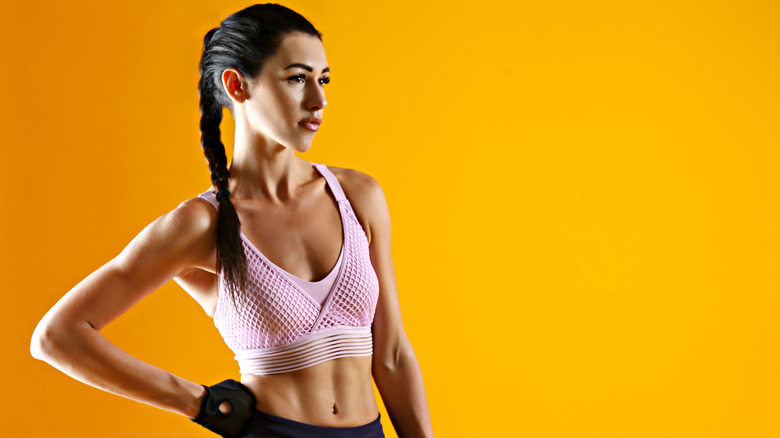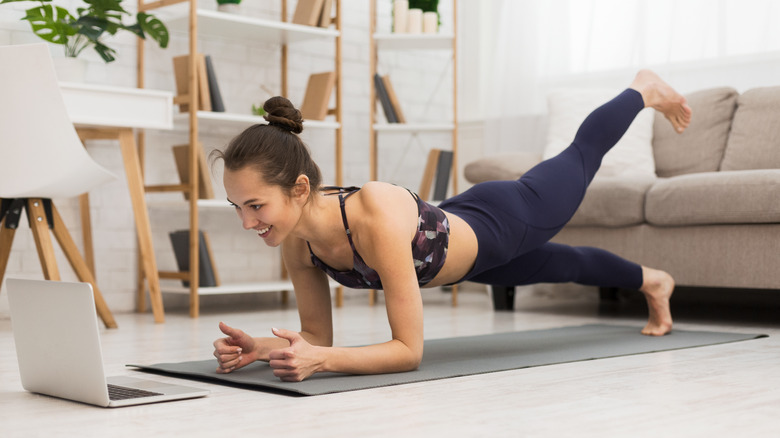The Real Reason Not Everyone Can Get A Six-Pack
While sculpted six-pack abs have long been a popular fitness goal, they aren't as attainable as you might think. In fact, whether or not it's even possible for you to get six-pack abs largely depends on your genetics and anatomy (via Everyday Health). Although it may seem like people with six-packs have six different abdominal muscles, it's really just one large muscle called the rectus abdominis.
The rectus abdominis muscle is separated by two long tendons stretching across the muscle, which are divided by bands of connective tissue. These bands create indentations in the muscle, which can become more visible when your abs are toned (via Healthline). The number of bands you have, however, depends on your genetics. In order to achieve a set of six-pack abs, you would need to have been born with at least three connective tissue bands. Without three or more bands, it is very difficult to attain visible abs, much less a six-pack.
"Everyone's muscles are built differently," Melody Scharff, a certified personal trainer and fitness instructor in New York City, told Everyday Health. "Some people have deep muscle bellies, which create higher peaks in between those tendons, and thus abs are more visible. Others have more shallow muscle bellies, which means you may never get the peaks and valleys like some people."
How to tone your abs
Regardless of whether or not you can achieve a six-pack or visible abs, you can still tone and strengthen your abdominal muscles by maintaining a healthy and well-balanced diet and following a regular exercise regimen that actively engages your core (via Women's Health). This involves eating more protein and adding more cardio workouts to your fitness routine, both of which can help you burn fat, lose body weight, and rebuild muscle.
In particular, cardio workouts that strengthen your muscles and engage your entire core, like high-intensity interval training (HIIT), are key to building toned and defined abs. This means working your external obliques, transverse abdominals, and internal stabilizers, as well as your rectus abdominis.
"The beauty of a HIIT class is that it gives you the benefit of body fat loss, as well as putting on lean mass," Steve Uria, a certified trainer and founder of the HIIT-based fitness studio Switch Playground, told Women's Health. "I would say, if you start doing HIIT three to four times a week you will see a noticeable difference in your body." Strength training exercises like planking and dead bug exercises can also help sculpt your core (via Healthline).


